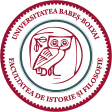Digitizarea documentelor medievale din Arhivele Naţionale ale României
The main objective of the project consists in the digitization of all medieval documents (prior to 1600) preserved by the National Archives of Romania and the creation of an onlineaccessible database. The project will be implemented through a partnership between the University of Bucharest, The National Archives of Romania, The "Babes-Bolyai" University of Cluj-Napoca and The National Archives of Norway.
Until now there has been no project aimed at the digitization of documents in the National Archives of Romania. The majority of the European states have developed programmes for the digitization of the archives. Usually these projects began with the medieval documents, which, because of their age and significance for the cultural heritage, took priority within the strategies for digitization (Austria, Italy, the Vatican, the land of Bavaria in Germany, Great Britain, Norway, Slovakia, Croatia, the Czech Republic etc.). Among the neighbouring countries of Romania, Hungary holds the best position, as the National Archives of Hungary have digitized all the documents in their medieval collection prior to 1526 and a large portion of the documents in the early modern and modern periods: www.mnl.gov.hu. The main target group of the project consists in medieval history scholars: professors, doctoral and postgraduate students from universities in Romania, researchers at the Institute of History of the Romanian Academy, secondary school teachers and individual researchers. Another target group are scientists (professors, PhD students, students, etc.) from Hungary, interested in medieval history of Transylvania. German historians interested in the history of Germans in medieval Transylvania are an important target group.
There is a vast horizon of expectation among the historians regarding the digitization ofmedieval documents. The project would represent a first step toward the digitization of the archival heritage in Romania. The presence in project of the two Romanian Universities has to be understood as a representation of the real beneficiaries of the project, for these two top Universities from Romania stand for the whole academic community. The general public interested in history is a major beneficiary as it will have available studies and history books better written because researchers broad access to digitized documents. Local communities will benefit from this project because a better knowledge of local history helps shape local identity.
To facilitate public access to the information - inventory and document images - will be an online database. Based on the finding aids, we estimate that the repositories of 32 branches of the National Archives of Romania hold about 30000 archival units prior to 1600, with a margin of error of maximum 5%. Of these, approximately 10% concern Wallachia and Moldavia, while the rest of 90% Transylvania. These documents will be processed and included in the online database.
The main activities necessary for project implementation are: identifying and preparing documents for scanning, restoration of damaged documents, scanning documents, making their inventory, making a database, loading data into the database, making the website to access the database, the evaluation and the dissemination of the project.
The National Archives of Norway is the partner from the donor states, with an experience in digitizing documents dating back to 2006. During the development of the project, the Norwegian partner will bring his know-how; it will be present at the opening and dissemination conferences and will check periodically the database functionality, as foreign perspective. The involvement of the Norwegian partner is required by the dimension of the project, centred mainly on digitizing the medieval documents held by the National Archives of Romania.
The success of this project of the digitization will open new possibilities for the cooperation between the partners from Romania and those from Norway. Every country which has begun digitizing the documents for medieval period, has continued, through new projects, to digitize the documents issued in other historical periods. For the moment it is essential to implement the present project, which will certainly lead to new ones.
See more al the http://www.arhivaistorica.ro/

